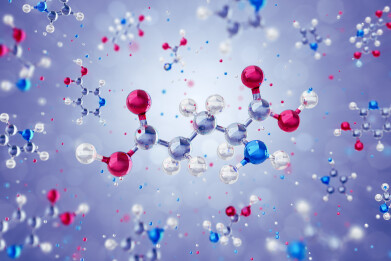Air quality monitoring
Should we use aerosolised sulfates to slow global warming?
Nov 06 2024
Recently, a post on X has been doing the rounds for suggesting that tech professionals in the United States support the use of aerosolised sulfates as a sort of quick fix in the fight against climate change. But this was the first many people had heard of the strategy. So, what does it entail?
Using aerosolised sulfates to combat climate change is a geoengineering strategy known as "solar radiation management" (SRM). The concept involves releasing sulfate aerosols into the stratosphere, where they reflect some of the sun's radiation back into space. This effect, similar to the natural cooling observed after major volcanic eruptions, could potentially offset some of the warming caused by greenhouse gases. While the idea has been discussed for years, it remains highly controversial, primarily due to its uncertain side effects and ethical implications.
How aerolised sulfates could cool the planet
Sulfate aerosols, once injected into the upper atmosphere, form reflective particles that increase the Earth’s albedo, or its ability to reflect sunlight. Following the 1991 eruption of Mount Pinatubo, for example, large amounts of sulfur dioxide were emitted into the atmosphere, resulting in a measurable drop in global temperatures of about 0.5°C over the following year. Mimicking this effect artificially could theoretically reduce global temperatures, potentially offering a temporary solution to climate change while longer-term strategies (like emission reductions) take effect.
Advocates of this approach argue that sulfate aerosol injection could provide a "quick fix" for temperature rises, buying critical time to curb greenhouse gas emissions. However, it would not address the root causes of climate change, such as carbon dioxide and methane emissions, and it would need to be maintained continually to have lasting effects. Stopping the injections abruptly could lead to rapid and intense warming, a phenomenon known as “termination shock.”
What are the side-effects?
The risks of using aerosolised sulfates are significant, spanning environmental, social, and political domains.
- Stratospheric ozone depletion: Sulfate aerosols can enhance reactions that break down ozone, potentially worsening the ozone hole. This effect could increase ultraviolet (UV) radiation reaching the Earth's surface, heightening risks for skin cancer, cataracts, and ecosystem damage, especially in regions closer to the poles where ozone thinning is already an issue.
- Changes in precipitation patterns: Altering solar radiation could disrupt global weather patterns, impacting precipitation and potentially leading to droughts or altered monsoon cycles. Studies suggest that SRM could reduce rainfall in parts of the world, including Africa, Asia, and South America, jeopardizing water and food security for millions. It’s particularly concerning that these regions are often the most vulnerable to climate change impacts already.
- Ocean acidification: Aerosolised sulfate injection would not counteract ocean acidification, another consequence of increased atmospheric CO₂. Acidifying oceans affect marine life, particularly organisms that build shells and skeletons, such as corals, shellfish, and some plankton species, disrupting marine ecosystems and the economies that rely on them.
- Potential for regional climate conflicts: The uneven effects of SRM could lead to international tension. For example, while some regions might benefit from cooling, others could experience adverse climate impacts. This risk raises questions about who would control such a technology and how decisions would be made to start or stop geoengineering projects.
- Risk of termination shock: If sulfate injections were suddenly stopped, the climate could rapidly return to its previous warming trajectory, potentially even accelerating due to the built-up greenhouse gases in the atmosphere. This abrupt warming could have severe effects on ecosystems and societies that had adjusted to the cooler climate, posing a significant danger to biodiversity and human adaptation.
- Health impacts: Although aerosols are injected into the stratosphere to avoid direct inhalation by humans, some particles might descend to the troposphere, where they could affect air quality. Fine particulates from sulfates can aggravate respiratory conditions and cardiovascular diseases, posing a public health risk.
Ethical and governance challenges
Beyond physical risks, aerosolised sulfates raise profound ethical and governance issues. Geoengineering could be seen as a way to sidestep the necessary emissions reductions, potentially decreasing global momentum toward sustainable practices. Additionally, controlling global temperatures raises questions of power and governance: who decides the "ideal" global temperature? Implementing such a strategy could concentrate immense power in the hands of a few nations or entities, increasing the risk of misuse.
Moreover, the prospect of using SRM as a stopgap solution has led to concerns about "moral hazard," where reliance on this technology might reduce efforts to mitigate greenhouse gas emissions. This effect could delay essential measures for reducing emissions, ultimately worsening climate impacts if SRM is abandoned or becomes ineffective.
Digital Edition
IET 35.2 March
April 2025
Air Monitoring - Probe Sampling in Hazardous Areas Under Extreme Conditions - New, Game-Changing Sensor for Methane Emissions - Blue Sky Thinking: a 50-year Retrospective on Technological Prog...
View all digital editions
Events
May 10 2025 Karachi, Pakistan
May 11 2025 Vienna, Austria
May 11 2025 Seoul, South Korea
Salon Analyse Industrielle & Instrumentation
May 14 2025 Paris, France
May 15 2025 Istanbul, Turkey






_(4427399123)-(2).jpg)












